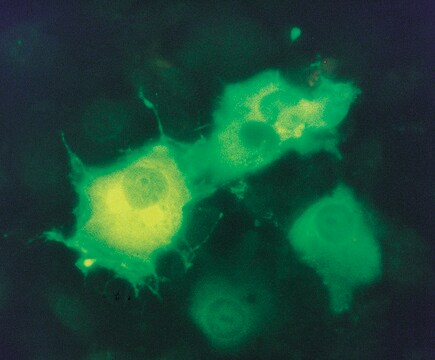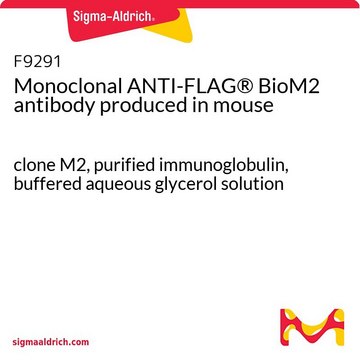A9594
Monoclonal ANTI-FLAG® M2-Cy3™ antibody produced in mouse
clone M2, purified immunoglobulin, buffered aqueous solution (Supplied as a solution in 10 mM sodium phosphate)
Synonym(s):
Monoclonal ANTI-FLAG® M2 antibody produced in mouse, Anti-ddddk, Anti-dykddddk
About This Item
Recommended Products
biological source
mouse
Quality Level
conjugate
CY3 conjugate
antibody form
purified immunoglobulin
antibody product type
primary antibodies
clone
M2, monoclonal
form
buffered aqueous solution (Supplied as a solution in 10 mM sodium phosphate)
species reactivity
all
concentration
~1 mg/mL
technique(s)
direct immunofluorescence: 10 μg/mL using mammalian cells fixed with methanol:acetone
isotype
IgG1
immunogen sequence
DYKDDDDK
shipped in
dry ice
storage temp.
−20°C
Looking for similar products? Visit Product Comparison Guide
General description
Application
Western Blotting (1 paper)
Learn more product details in our FLAG® application portal.
Physical form
Preparation Note
Other Notes
Legal Information
Not finding the right product?
Try our Product Selector Tool.
Storage Class Code
10 - Combustible liquids
Flash Point(F)
Not applicable
Flash Point(C)
Not applicable
Choose from one of the most recent versions:
Already Own This Product?
Find documentation for the products that you have recently purchased in the Document Library.
Our team of scientists has experience in all areas of research including Life Science, Material Science, Chemical Synthesis, Chromatography, Analytical and many others.
Contact Technical Service






